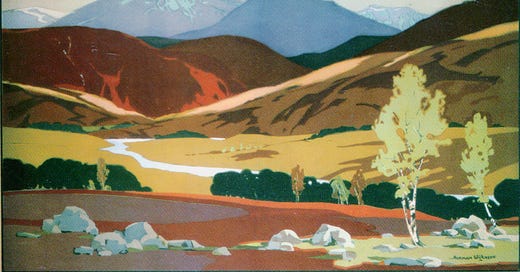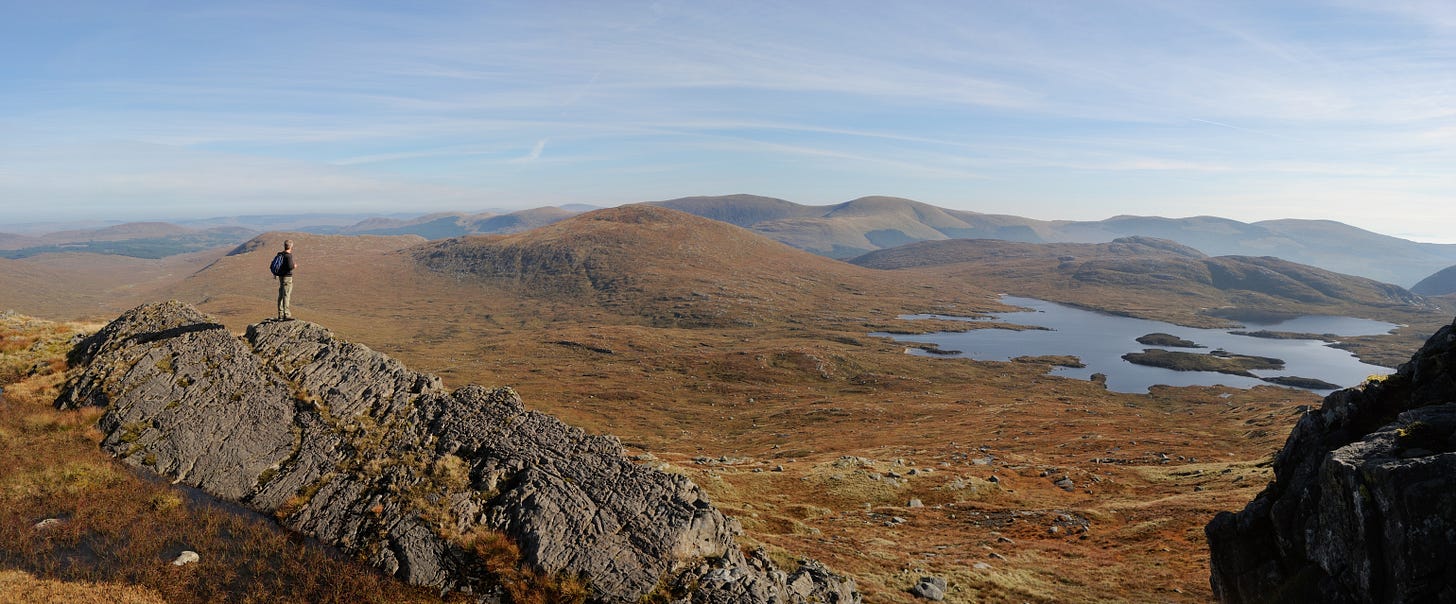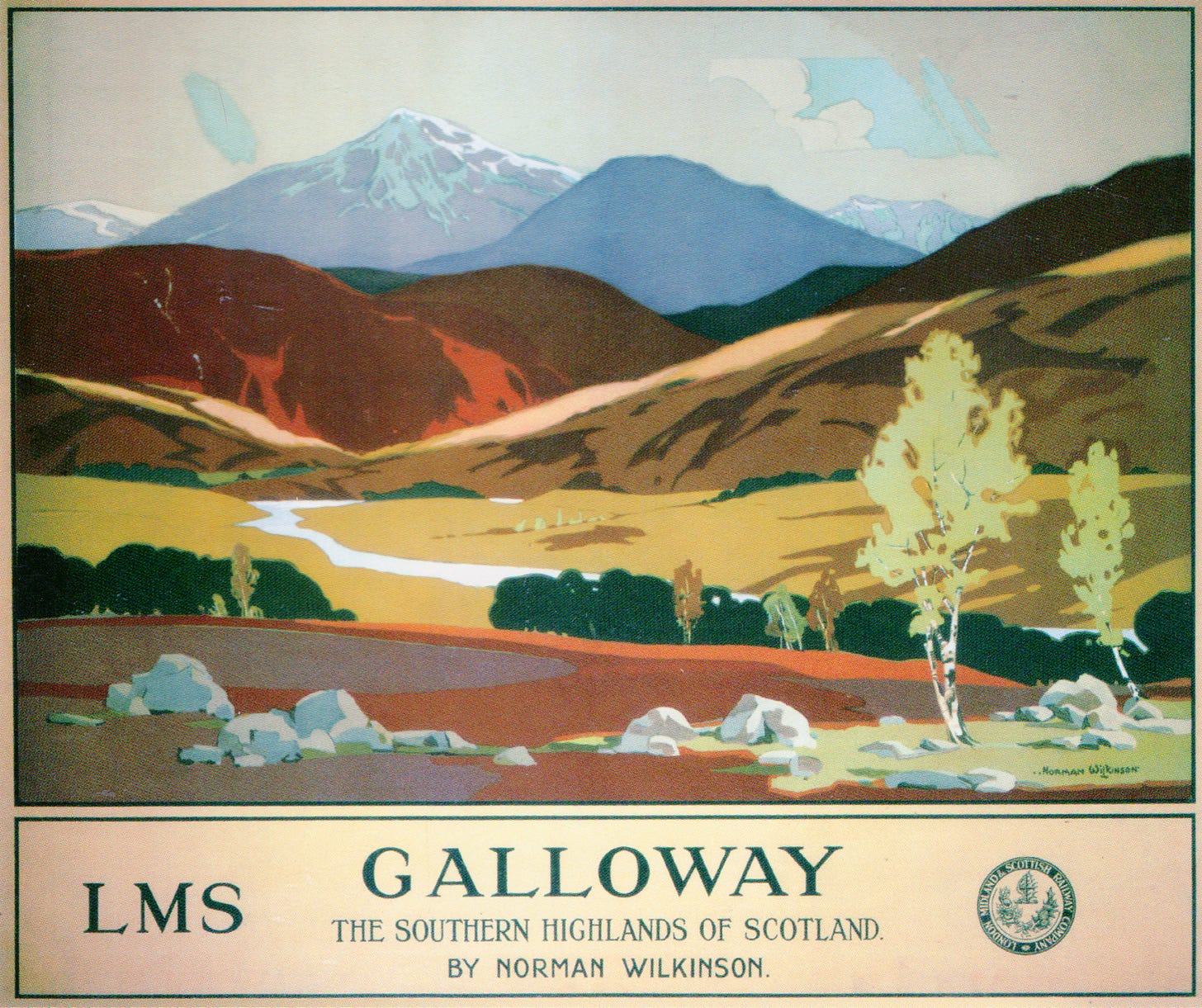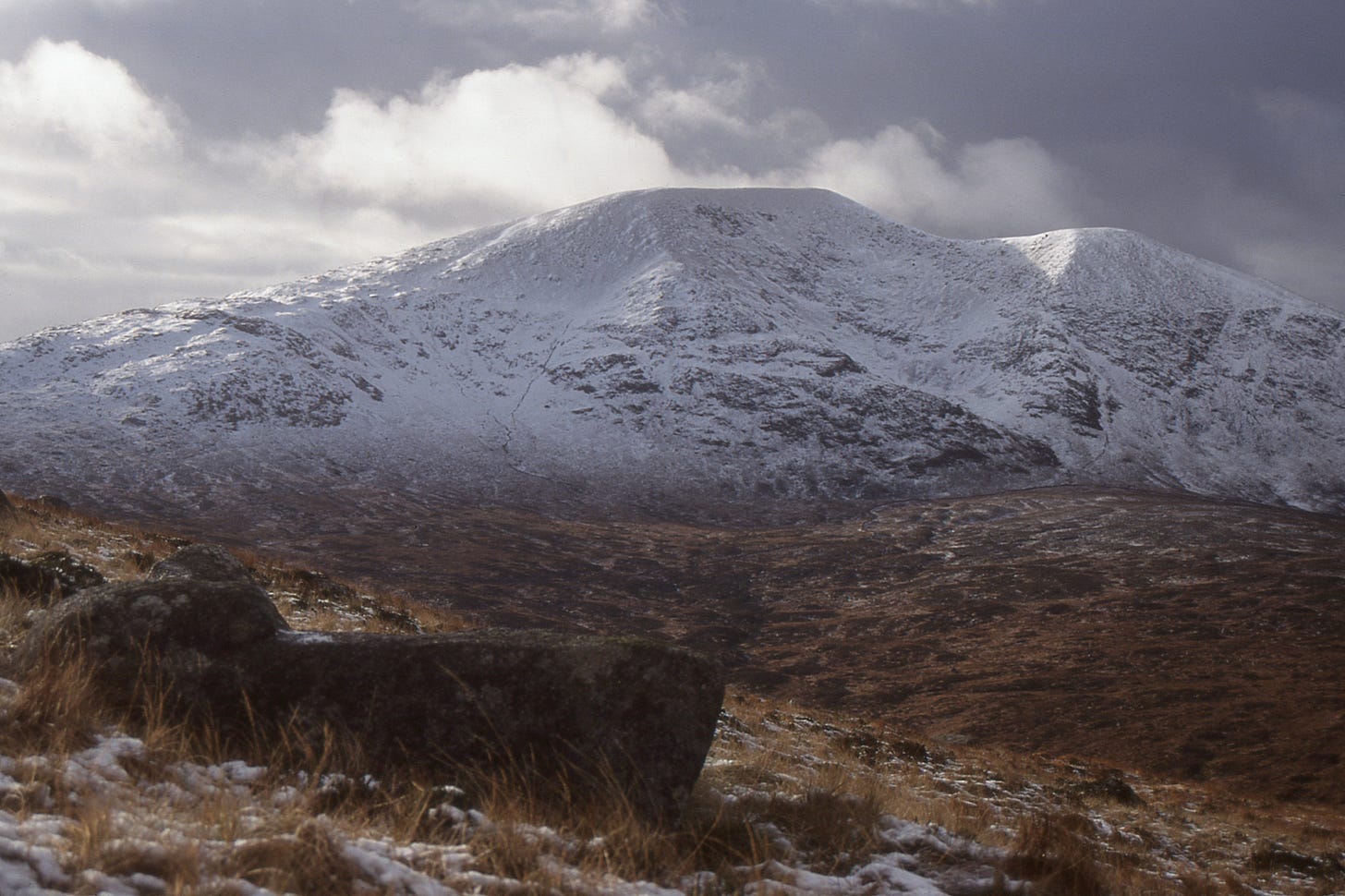Galloway: it's not somewhere in Ireland...
Last Monday the Scottish Government nominated my patch of ground to become our third national park. [1400 words, 6 mins
In the wilds of Galloway that look towards Ayrshire, up by the springs of Doon and Dee, there lies a wide country of surpassing wildness, whither resorted all the evil gypsies of the hill—red-handed men, outlaws and aliens of all this realm of well-affected men.
SR Crockett: The Raiders (1894)
I fixed on Galloway as the best place to go
John Buchan: The Thirty-Nine Steps
So maybe you're not a bandit or a red-handed man or lass. Maybe you aren't John Buchan’s hero Richard Hannay on the run from a gang of unseemly foreigners some time before World War One, or Aymer de Valence and his English army in 1307. Even so the Galloway Hills – the Galloway Highlands as they used to be called – have a lot to offer to the more rugged sort of hill-goer.1
A new national park?
The Scottish Government has pledged that at least one new national park will be designated during the current parliament.2 It's part of what the Scottish Greens got in exchange for their support for IndyRef Two. And on Monday they announced this little-known southwest corner of Scotland as their preferred place for it.
Some may feel that Galloway's hill ground and landscape qualities, great as they are, aren't quite up there with Glen Affric and the Isle of Harris. We can't help noticing a certain amount of wood-pulp plantations encircling the bigger hills. Others of us, noting how the roads, restaurants and footpaths aren't quite as convincing as they could be, can't wait for the improved infrastructure. While anticipating the influx of designation-driven visitors, the boost to the local economy and in particular to the sales of the area's single hill-walking guidebook (which is by me, heh-heh!) and its various ones to the attractive woodlands, riversides and coasts (you guessed it…)
Granite resolve
The heart of Galloway is the group of two dozen 2000-footers grouped around the Merrick. And in particular, the Dungeon Range. This is the bit in the middle, the granite bit, as chunky and jumbled as the central lane of your local Lidl. Mullwarchar, the Dungeon and Craignaw: barely sneaking over the 600m mark, but you'll be impressed by the glacier-abandoned boulders, the granite slabs, the peaty holes in between them, and the sparkling lochans on every side. This is ground where you should expect to take longer than you expected…
Robert the Bruce went on the run here, and his small guerrilla band was so toughened by abrasion against the Galloway granite that the went on to take back control of Scotland. Wild brigands lived among the small crags, murdering passers by for the sake of our fancy Gore-tex jackets and plunging our bodies into a soggy corner of Loch Neldricken. At least according to Victorian novelist S R Crockett, and he came from Castle Douglas so he should know.
If you like your wild landscape really wild. If you like your lakes to have whooper swans in the middle and no ice-cream vans around the edge. If you like to have one foot on bare rock and the other one deep in a peat bog. If you like your granite with goats on. Then Galloway is the place to go.
But perhaps you're neither a dispossessed Norman baron nor a fictional character in John Buchan's The Thirty-nine Steps: but simply someone looking for a green and peaceful corner of the United Kingdom, one with a chunk of rugged mountain country but also a coastline of rocky coves and golden sandy beaches, along with ancient oakwoods and wide rivers where the salmon run.
Or maybe you don't need to look around for such a pretty and peaceful corner of the country – because you already live right here in Galloway. In which case you're already well aware of our quiet country roads, our handsome small towns of red sandstone or grey granite, out secret beaches and our miles and miles of footpaths by riversides and woodlands and along the windy cliffs.
The wide valleys of Eskdale, Annandale, Nithsdale and the Glenkens divide the higher ground. It’s here that you'll find the ruined castles left over from the dangerous times when Dumfriesshire was fought over not just between Scotland and England but between every neighbouring glen. Here too are the deep green oakwoods, generously watered by the region's rainfall – yes, you will occasionally be needing a waterproof jacket In Galloway. But that rainfall gathers into the wonderful rivers, wide between their wooded banks, and the same silver-grey as the salmon swimming up them.
Almost as wide and generous as the rivers themselves are the open streets of the stone-built towns. Two centuries ago this was a rich and prosperous landscape, sending tens of thousands of cows southwards into England every autumn. This history combines with the easy-to-work red sandstone and classic granite to give the handsome high streets of Newton Stewart and Gatehouse, Kirkcudbright and Castle Douglas, Annan and Thornhill.
But after all that, perhaps the greatest glory of Dumfries & Galloway is its coast. Warmed by the Gulf Stream, the shoreline is green and intricate, with palm trees, rocky cliffs and little sandy beaches. Here you look across the Solway's gleaming mudflats or even more shining sea, to the blue shadow that's Ireland, or the Isle of Man, or the humped hills of England. While closer at hand you might just spot a porpoise or some seals. (Then again, you might not: I’ve spotted the porpoises just the once.)
For several years, a ‘Rhinns of Galloway Trail’ has been in development around the two western peninsulas. A ‘Galloway Coastal Trail’ is merely a muddy glitter in the eye of the council’s underfunded access department. (And my own sketched-out Nithsdale Way isn’t even that…)
Kirkcudbright is the artists' town: settled back in the 1940s for the sake of its pretty harbour and the clear seaside light. Today the whole region is noted for its artists and craftspeople. The late May holiday weekend sees Spring Fling, Scotland's oldest and biggest (almost 100 of them) open studios event. While in the autumn, lovers of literature head for Wigtown, Scotland's tiny but official book town.
So whether you're on the run, or just on holiday: you could fix on Galloway as the place to go.
The Thirty-Nine Steps (1915); the 1978 film with Robert Powell, generally considered the worst of the 3 x 39 Steps film versions, was shot in Dumfriesshire.
I use ‘pledge’ here to mean ‘promise made by a politician’: less binding, obviously, than the customary use of the word ‘promise’.














great post! Dumfries and Galloway is one of my favourite places!
A good read thanks and after a few visits I know there's still so much more to see!